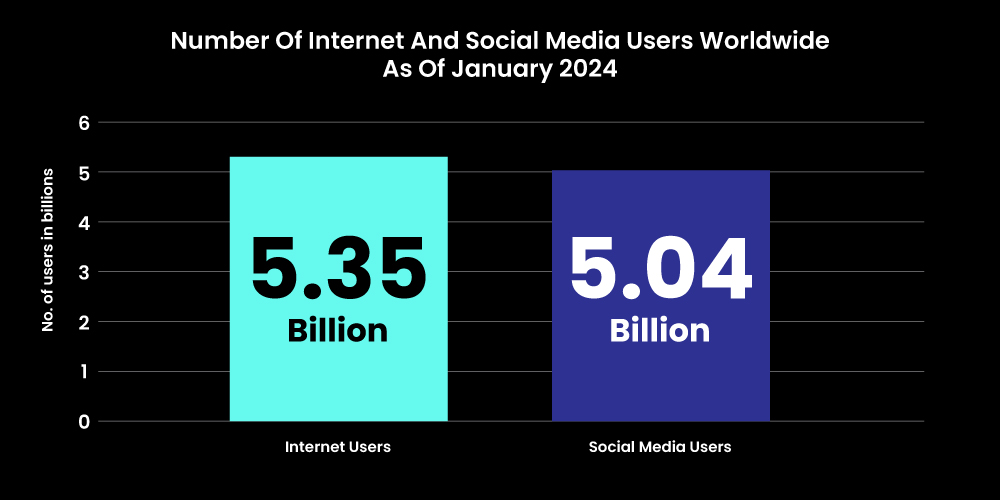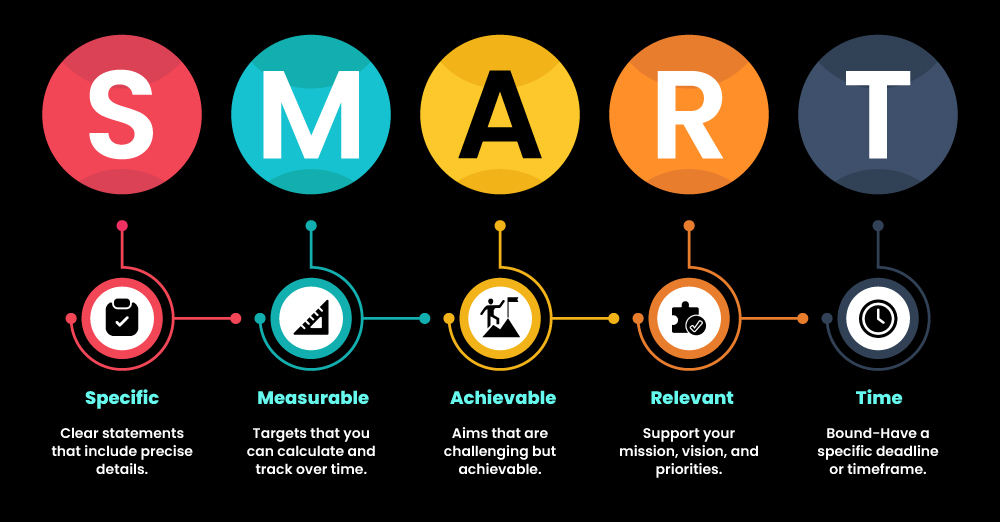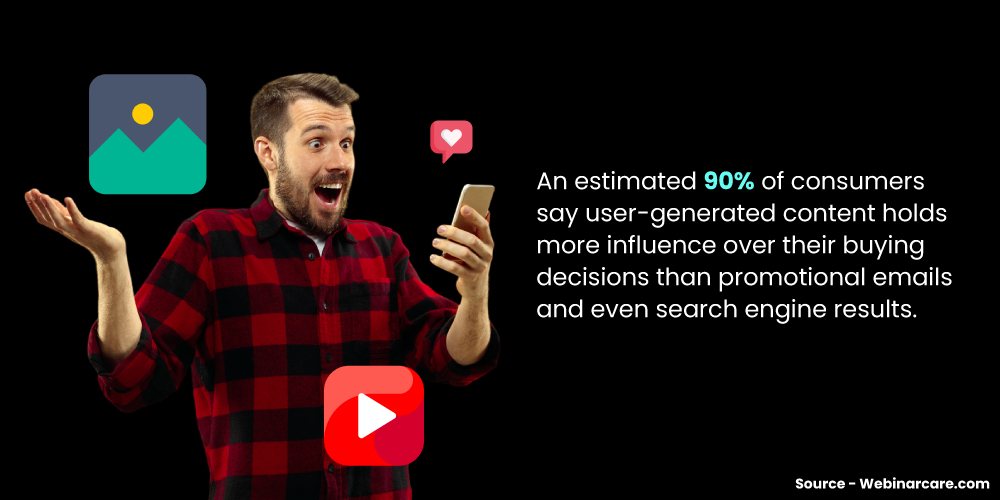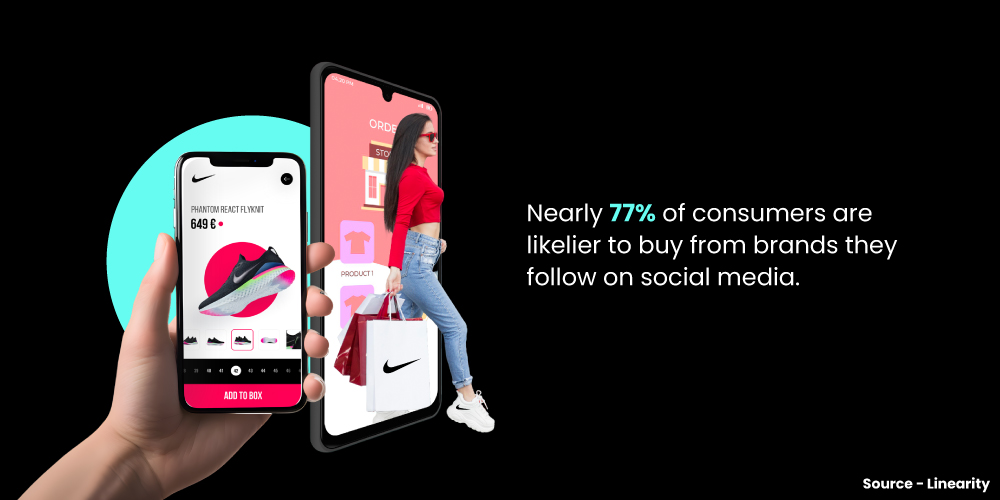10 Best Social Media Advertising Practices to Master in 2024
Are you looking for the “one magical spell” to hack social media advertising as part of your social media strategy?
I’m sorry to say that there isn’t one.
Social media algorithms, behavioral trends, and features change daily, making it difficult to rely on a single approach.
But don’t worry, I’m here to help!
In this blog post, we’ll explore 10 best practices to set your brand up for the best chance of success in social media advertising.
From creating engaging content to leveraging the power of influencers, we’ll cover everything you need to know to take your social media advertising to the next level.
But before diving into the details, let’s explore,
What is Social Media Advertising and Why is it Important for Your Brand?
Social media advertising is a form of digital marketing that involves creating and sharing content on social media platforms to promote a product or service. It is an effective way to reach a large audience, increase brand awareness, and drive traffic to your website.
According to Statista, as of January 2024, about 66% of the world’s population, which is roughly 5.35 billion people, were using the internet. Out of this number, approximately 62% (5.04 billion people) were also active on social media

This makes social media advertising an essential tool for businesses to connect with their target audience and build brand loyalty.
Social media advertising spending is expected to reach over $220 billion by the end of 2024, making it one of the largest and fastest-growing segments of digital advertising. With the rise of social media platforms, it’s essential to stay up-to-date with the latest trends and best practices to make your brand stand out.
10 Best Social Media Advertising Practices to Master in 2024
1. Define Your Goals and Target Audience
Without a clear and specific goal, you won’t be able to measure your performance and optimize your campaigns. Similarly, without a well-defined and segmented target audience, you won’t be able to reach the right people with the right message at the right time.

You should choose one or more goals that align with your overall business objectives and are SMART (Specific, Measurable, Achievable, Relevant, and Time-bound).

Once you have your goals, you need to identify and understand your target audience. Create buyer personas that represent your ideal customers, based on their demographics, psychographics, behavior, interests, needs, pain points, and priorities.
Use the tools and data provided by social media platforms to research and analyze your audience, such as Facebook Audience Network, Instagram Insights, Twitter Analytics, YouTube Analytics, and more.
By defining your goals and target audience, you will be able to create and run more relevant, personalized, and effective social media ads that resonate with your audience and drive them to take action.
2. Master Multi-Platform Strategies
Don’t limit yourself to one or a few social media platforms but rather leverage the power and potential of multiple platforms to reach and engage your audience.
Each social media platform has its strengths, weaknesses, opportunities, and threats. For example,
Facebook has the largest and most diverse user base, but also the highest competition and ad costs.
Instagram has the highest engagement rate and visual appeal, but also the lowest organic reach and link clicks.
Twitter has the best real-time and conversational features, but also the shortest attention span and lifespan of posts.
LinkedIn has the most professional and B2B-oriented audience, but also the most formal and conservative tone.
YouTube has the most video and educational content, but also the most complex and time-consuming production process.
TikTok has the most viral and creative content, but also the most unpredictable and controversial trends.
By using a multi-platform strategy, you can take advantage of the unique benefits and overcome the limitations of each platform. You can also diversify your risk and increase your exposure and reach.
For example,

“If you want to improve your online presence, brand awareness, and customer reach but don’t have the resources or time to manage it? Fret not; Mastoke’s Social Media Marketing experts can help you with a smart multi-channel strategy for your brand to give it the growth it deserves!”

3. Utilize User-Generated Content (UGC)
But what is User-Generated Content?
UGC is any content that is created and shared by your customers, fans, or followers on social media, such as images, videos, reviews, testimonials, or stories. It is one of the most powerful and authentic ways to showcase your brand, products, or services, and to build trust and credibility with your audience.

This shows the huge potential and benefit of using UGC for your social media advertising campaigns.
Some of the ways to utilize UGC for your social media advertising are:
- Encourage your customers to create and share UGC related to your brand, products, or services, by offering incentives, rewards, or recognition
- Collect and curate the best UGC from your customers and feature them on your social media profiles, pages, or stories, with their permission and credit
- Repurpose and reuse the UGC for your social media ads, such as image, video, carousel, or stories ads, with their permission and credit
- Create and run UGC contests or campaigns, where you ask your audience to create and share UGC based on a theme, hashtag, or challenge, and reward the best entries with prizes or exposure
- Partner with influencers or micro-influencers who can create and share UGC for your brand, products, or services, and reach their loyal and engaged followers
The above post features a customer delighting in a cup of Starbucks coffee. Such UGC posts become a win-win scenario, enhancing the brand experience for the company and the customer.
By leveraging such UGC for your social media advertising, you will be able to create and run more authentic, engaging, and persuasive social media ads that showcase your brand value, customer satisfaction, and social proof.
4. Utilize Influencer Marketing Strategically
But, what is Influencer marketing?
Influencer marketing is the practice of teaming with influential people who have a large and loyal following on social media, and who can promote your brand, products, or services to their audience.
Influencer marketing is one of the most effective ways to reach new and relevant customers, as it can help you increase your brand awareness, trust, engagement, and sales.
According to Influencer Marketing Hub, the influencer marketing industry is expected to grow to $13.8 billion in 2021, and 90% of marketers say that influencer marketing delivers a better ROI than other marketing channels.
However, influencer marketing is not as simple as finding a popular person and paying them to post about your brand. It requires a strategic approach, a clear understanding of your goals and audience, and a careful selection and management of your influencers.
In the above post, Samsung’s Galaxy S22 smartphone, which was launched in 2022, became very popular. To promote the phone even more, Samsung partnered with Google and worked with popular TikTok and Instagram influencers like Addison Rae and Myra Molloy. These influencers have over 88 million followers on TikTok. This helped create a lot of excitement for the phone.
Must Read: How Influencer Marketing Has Changed Consumers’ Decision-Making
To utilize influencer marketing strategically, you should:
- Define your goals and target audience and align them with your influencer marketing strategy. For example, if your goal is to increase brand awareness, you may want to work with macro-influencers who have a large and broad reach. If your goal is to increase conversions, you may want to work with micro-influencers who have a small and niche audience.
- Find and vet your influencers, and make sure they are relevant, credible, authentic, and engaging. You can use tools such as BuzzSumo, Upfluence, or AspireIQ to search for influencers based on your keywords, niche, location, platform, and more. You should also check their profiles, content, engagement, and audience, and make sure they match your brand values and voice.
- Build and maintain a relationship with your influencers, and treat them as partners, not vendors. You should communicate your expectations, guidelines, and deliverables clearly, and provide them with creative freedom, feedback, and support. You should also compensate them fairly, either with money, products, or other incentives, and recognize and appreciate their work.
- Track and measure your influencer marketing performance, and use tools such as Google Analytics, etc.
5. Prioritize Community Building
Social media is not only a place to advertise your products or services but also a place to build relationships with your customers and fans. By prioritizing community building, you can create a loyal and engaged audience that trusts and supports your brand.

Therefore, you should prioritize community building in your social media advertising strategy, as it can help you increase your customer retention, satisfaction, and advocacy.
You can prioritize community building in various ways, such as:
- Create a branded hashtag, group, or page that encourages your customers and fans to join, share, and interact with your brand and each other.
- Respond to comments, messages, and feedback from your customers and fans, and show your appreciation and gratitude.
- Ask questions, polls, quizzes, or surveys to your customers and fans, and listen to their opinions, suggestions, and needs.
- Share valuable and educational content that helps your customers and fans solve their problems, learn new skills, or achieve their goals.
- Host contests, giveaways, challenges, or live events that reward your customers and fans for their participation and engagement.
By prioritizing community building, you will be able to create more meaningful and lasting relationships with your audience and turn them into loyal advocates for your brand.
6. Use Social Proof and Testimonials
Social proof is the phenomenon where people tend to follow the actions or opinions of others, especially when they are uncertain or unfamiliar with a situation.
The best form of social media proof,
Testimonials are a kind of social proof, where customers or experts share their positive experiences or feedback with a brand, product, or service.
Social proof and testimonials can help you increase your credibility, trust, and conversions, as they show that your brand, product, or service is reliable, valuable, and satisfying.
According to Sociabble, 84% of consumers value recommendations from friends and family above all forms of advertising – additionally, 77% of consumers are likely to purchase after hearing about it from someone they trust.
Therefore, you should use social proof and testimonials in your social media advertising strategy, as they can help you persuade and influence your audience to take action.
You can use social proof and testimonials in various ways, such as:
- Feature customer or expert testimonials in your ads, such as quotes, ratings, reviews, case studies, or success stories that highlight the benefits or results of your products or services.
- Display social proof indicators in your ads, such as showing the number of customers, followers, likes, shares, comments, or awards that your brand, product, or service has received.
- Create social proof campaigns, such as asking your customers to share their testimonials, reviews, photos, or videos with your brand, product, or service using a specific hashtag, and featuring them in your ads or other marketing channels.
7. Track and Measure Your Results
Without tracking and measuring, you will not be able to know how your campaigns are performing, what is working and what is not, and how you can improve your strategy and optimize your ROI. Tracking and measuring your results can help you gain valuable insights into your audience, your ads, and your goals.
To track and measure your results, you should:
- Define your key performance indicators (KPIs), and align them with your goals.
For example, if your goal is to increase brand awareness, you should track metrics such as impressions, reach, views, or followers.

If your goal is to increase conversions, you should track metrics such as clicks, leads, sales, or revenue.

- Use tools such as Google Analytics, Facebook Pixel, or Hootsuite to collect, analyze, and report your data. These tools can help you track and measure your social media advertising performance across different platforms, channels, and devices.
- Test and experiment with different variables, such as ad formats, ad copy, ad images, ad placements, ad targeting, ad budget, or ad count. By testing and experimenting, you can find out what works best for your audience and your goals, and optimize your campaigns accordingly.
8. Follow Social Media Advertising Guidelines and Policies
Each social media platforms have its advertising guidelines and policies that regulate what kind of content and ads are allowed and what are not. These guidelines are designed to protect the users, the advertisers, and the platforms from harmful, misleading, or inappropriate content and ads.
Violating these guidelines and policies can result in your ads being rejected, suspended, or banned, which can damage your reputation and waste your resources. Therefore, you should follow the social media advertising guidelines and policies in your social media advertising strategy, as they can help you create more compliant and ethical ads that respect the rights and preferences of your audience and the platforms. You should:
- Review and understand the guidelines and policies of each platform that you use for your advertising campaigns, and keep yourself updated with any changes or updates. You can find the guidelines and policies of the major social media platforms here: Facebook, Instagram, Twitter, LinkedIn, Pinterest, and TikTok.
- Avoid creating content or ads that are illegal, offensive, violent, hateful, sexual, or otherwise inappropriate for your audience and the platforms.
For example, you should not create or promote content or ads that involve drugs, weapons, gambling, adult services, personal attributes, sensitive events, or false claims.
- Respect the privacy and consent of your audience and the platforms, and do not collect, use, or share any personal or sensitive information without their permission.
For example, you should not create or promote content or ads that involve tracking, spying, phishing, impersonation, or harassment.
9. Learn from the Best Practices and Examples of Others
One of the best ways to improve your social media advertising skills and knowledge is to learn from the best practices and examples of others.
Look at the competitor’s analysis followed by Metricool,
Observe and analyze what other brands are doing on social media, and you can get ideas for your campaigns. You can learn from the best practices and examples of others in various ways, such as:
- Following and studying the social media accounts of your rivals, industry leaders, or niche influencers. You can see what kind of content and ads they create, how they engage with their audience, what methods and tactics they use, and what results they achieve.
- Reading and watching the latest news, trends, reports, case studies, or tutorials on social media advertising. You can find valuable information and tips from experts, professionals, or platforms that can help you stay updated and informed on the best practices and examples of social media advertising.
- Joining and participating in online communities, forums, groups, or events related to social media advertising. You can network with other marketers, advertisers, or enthusiasts, and exchange ideas, feedback, or experiences on social media advertising.
10. Experiment and Innovate with New Features and Trends
Social media is constantly growing and changing, with new features and trends emerging every day. These features and trends can offer new opportunities and challenges for your social media advertising strategy, as they can help you reach new and existing customers, create more interesting and interactive ads, and stand out from the competition.
For instance, look how Doritos turned a hotel in Vegas into a giant chip to brand recall,
However, social media trends can also require you to adapt and innovate your strategy, as they can change the choices and behaviors of your audience and the platforms.
Therefore, you should experiment and innovate with new features and trends in your social media advertising strategy, as they can help you stay ahead of the curve and gain a competitive edge. You should:
- Stay updated and informed on the latest features and trends on social media, and see how they can benefit your advertising goals and audience. You can use tools such as BuzzSumo, Google Trends, or Socialbakers to discover and analyze the most popular and relevant topics, keywords, hashtags, or influencers on social media.
- Experiment and test different features and trends on your social media advertising campaigns, and see how they perform and affect your results. You can use tools such as Facebook Creative Hub, Instagram Reels Ads, or TikTok Spark Ads to create and run ads using the latest features and trends on social media.
- Innovate and create unique and original content and ads that utilize the new features and trends of social media, and showcase your brand personality and value proposition. You can use tools such as Canva, Lumen5, or InVideo to create and edit attractive and professional content and ads for social media.
Conclusion
Social media advertising is a powerful tool for any marketer or business owner who wants to grow their brand, reach their audience, and achieve their goals. However, social media advertising is not a one-size-fits-all solution. It requires a strategic, creative, and data-driven approach that adapts to the changing needs and preferences of your audience and the channels.
By following the above practices, you will be able to create more effective and efficient social media advertising campaigns that deliver the desired results and ROI. We hope you found this blog helpful and informative, and we encourage you to apply these practices to your own social media advertising strategy.
Still, if you need any help or advice with your social media advertising, feel free to contact us. We are a team of experts and professionals who can help you create and manage your social media advertising campaigns, from strategy to performance. We have the experience, skills, and tools to help you achieve your social media advertising goals and grow your business.
